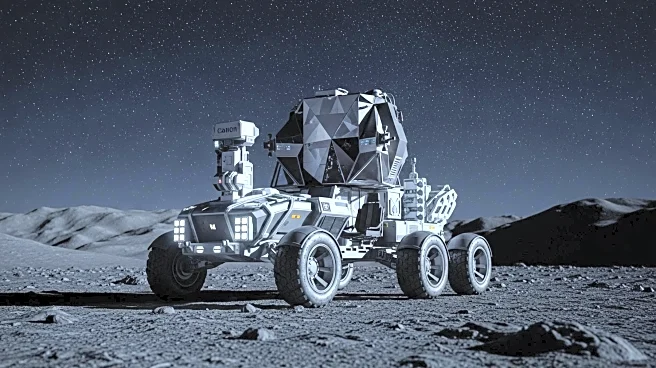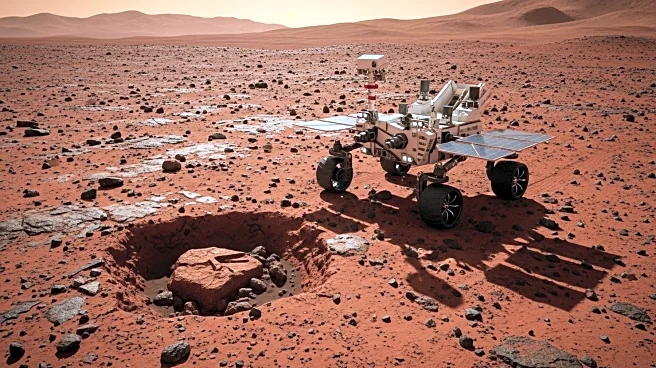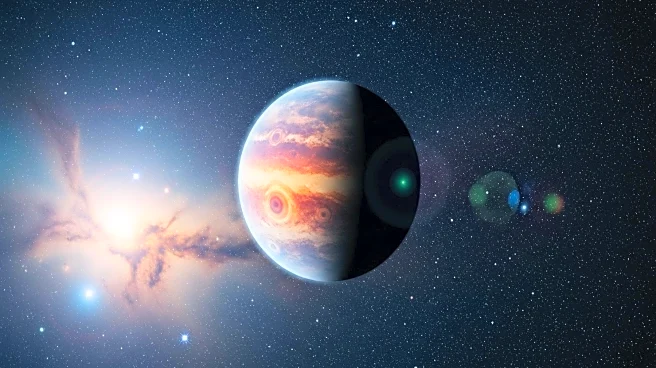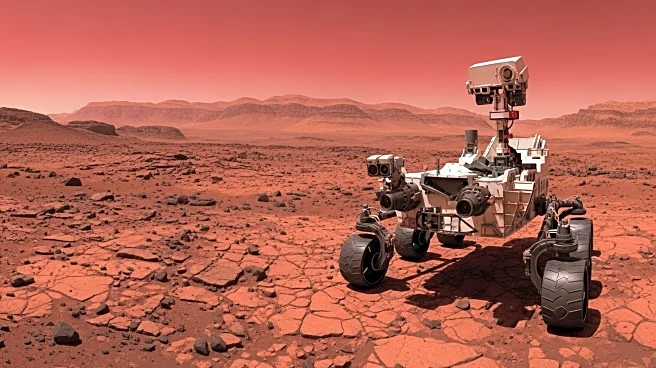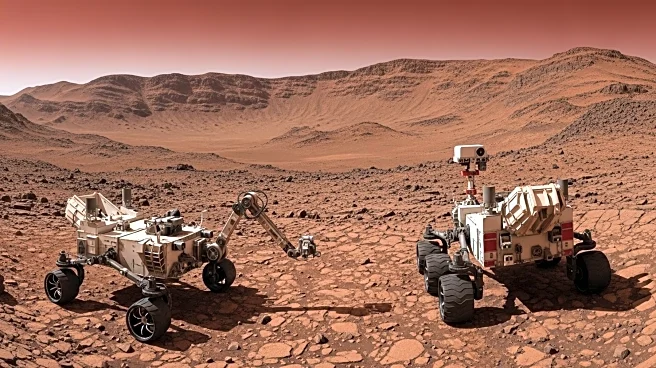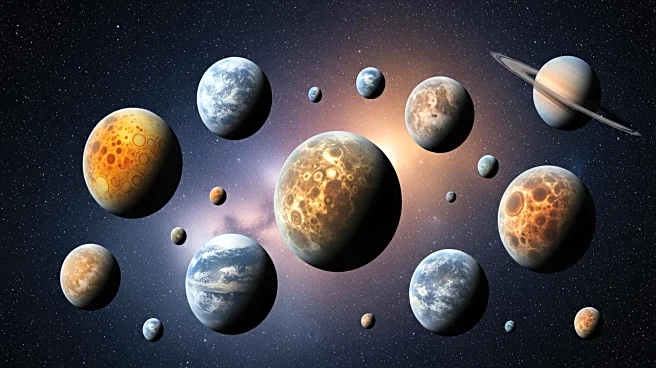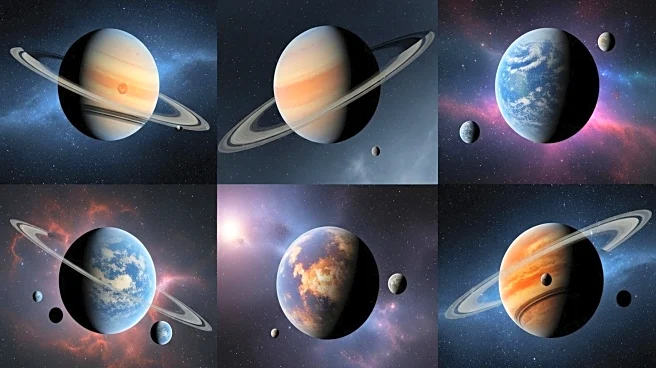What's Happening?
NASA has officially identified more than 6,000 exoplanets, marking a significant milestone in cosmic exploration. This achievement comes decades after the first exoplanets were discovered, with the database managed by the NASA Exoplanet Science Institute. The discovery rate has accelerated, with the 5,000-exoplanet milestone reached three years ago. The database could reach 10,000 entries in the coming years, driven by advancements in space telescopes like NASA's Nancy Grace Roman Space Telescope and the European Space Agency's Gaia mission. The large database allows researchers to compare our solar system to others, revealing insights such as the prevalence of rocky planets over giant ones in the universe.
Why It's Important?
The identification of over 6,000 exoplanets is crucial for understanding the universe and our place within it. This extensive database enables scientists to conduct statistical analyses on planetary characteristics, aiding in the search for Earth-like planets and potential life. The findings challenge existing perceptions of our solar system, offering a broader perspective on planetary formation and distribution. The ongoing research and future missions aim to focus on identifying rocky, Earth-like planets and investigating their atmospheres for signs of life, which could have profound implications for the search for extraterrestrial life.
What's Next?
NASA plans to continue its exploration efforts with upcoming missions and technological advancements. The agency aims to identify more exoplanets and study their atmospheres, potentially uncovering signs of life. The future research will require novel technology to block starlight, allowing for clearer observations of orbiting exoplanets. As the database grows, researchers will gain deeper insights into planetary formation and the conditions necessary for life, guiding future exploration missions to the moon, Mars, and beyond.



